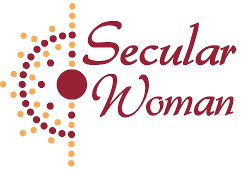By Connie Torrisi
Under the current educational standards across the United States, students are taught history in a plethora of omissions, egg aerations, out right lies and glossing over of the events that shaped America.
History, according to how we teach today, was created by men. Women have been virtually non-existent in terms of historical accomplishments.
It is not as if women contributed nothing toward the development and betterment of our country. Granted, most women were chained to domestic roles that allowed little time for pursuits outside the home. Husbands and fathers and other male relatives strongly discouraged women from pursuits beyond the front door.
But there were, in fact, many women who managed to break free of restrictive, traditional roles and make impressive and lasting contributions to society.
If it were not for Susan B. Anthony (1820 – 1906) and Elizabeth Cady Stanton (1815 – 1902), women may never been granted the right to vote or to own property. Anthony and Stanton were the pioneers of the long quest for women’s rights.
But, what have the schools taught us about Anthony and Stanton beyond their efforts to obtain woman’s rights? What have historians glossed over or avoided entirely about these two women?
Stanton was a freethinker. She was strongly resistant toward organized religion. She clearly believed women were discriminated against and subjected to second class status by Christianity. As she grew older, she became more outspoken against religious dogma and in 1895 published The Woman’s Bible. The book was not well received by the women’s suffrage movement and even Susan B. Anthony wanted to distance herself from the radical views of her lifelong friend.
Anthony, on the other hand, is depicted as a woman who chose not to marry in order to devote herself to obtaining the right to vote for women. Having freedom from domestic limitations and not being subjected to a husband’s rule may have been some part of Anthony’s overall strategy. However, evidence indicates that Susan B. Anthony was a lesbian. Her decision not to marry may not have been solely for the sake of personal freedom. No one knows whether her close friendship with Stanton included unrequited, romantic feelings. What is known, however, is that Anthony had a long term relationship with a woman named Emily Gross.
Although Gross was married, she managed to travel and spend a great deal of time with Anthony. Gross was not actually involved with the woman’s suffrage movement, yet was at Anthony’s side extensively. According to Lillian Faderman, author of To Believe in Women: What Lesbians Have Done for America – A History, (Houghton Mifflin Co., 1999) Anthony made her feelings for Gross known in correspondence to friends and referred to Emily as her ‘lover’.
Susan B. Anthony and Elizabeth Cady Station are only two participants in the vast army of women who contributed to our history. While the essence of their contribution is taught in schools, other aspects of their lives are hidden and ignored. Is it necessary to point out that Susan B. Anthony was a lesbian or that Elizabeth Cady Stanton was a freethinker?
We need to know such information in order to bring women’s history out of the closet. By avoiding and denying the existence of lesbians and freethinkers, the truth about human diversity remains hidden.
All history is served up in bits and pieces. Events are sometimes taken out of context and facts are changed or eliminated. In practice, historical figures are often portrayed as adhering to the same social, political and religious beliefs. Except for some larger-than-life male figures such as George Washington, historians simply ignore anything that falls outside the expectations of the majority. Common sense tells us that Lillian Faderman can not be the first and only researcher and writer to discover lesbians strewn throughout history. Common sense also tells us that Annie Laurie Gaylor, co-founder of Freedom From Religion Foundation, is not the first to discover a multiple of female freethinkers who sought to awaken the minds of the masses.
Women’s History is slowly being removed from the grip of bias, half truths, and indifference. Young women today have greater opportunities to learn about the hundreds of women who took active roles in forging history.
The fact that Susan B. Anthony was a lesbian and Elizabeth Cady Stanton was a freethinker does not make their contributions to the world any less significant. For me, in fact, knowing that some of my favorite female heroes were lesbian and/or freethinkers makes them all the more dear to my heart.
As we enter Women’s History Month this year, we have the opportunity to celebrate the achievements of the women who came before us: we have the opportunity to view them at deeper level than ever before.
As cultural anthropologist Margaret Mead expressed it:
“If we are to achieve a richer culture, rich in contrasting values, we must recognize the whole gamut of human potentialities, and so weave a less arbitrary social fabric, one in which each diverse human gift will find a fitting place.”
The gifts that Anthony and Stanton (and others) left us are forever a part of our society and culture. To acknowledge their diverse human attributes is to thank them for all that they gave.
